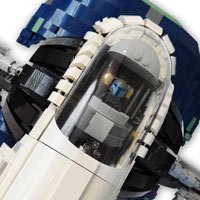
LDD is an Underdeveloped Abomination - Why Do So Many Still Use it?
By
Brick Customs, in Digital LEGO: Tools, Techniques, and Projects
-
Recently Browsing 0 members
No registered users viewing this page.

By
Brick Customs, in Digital LEGO: Tools, Techniques, and Projects
No registered users viewing this page.